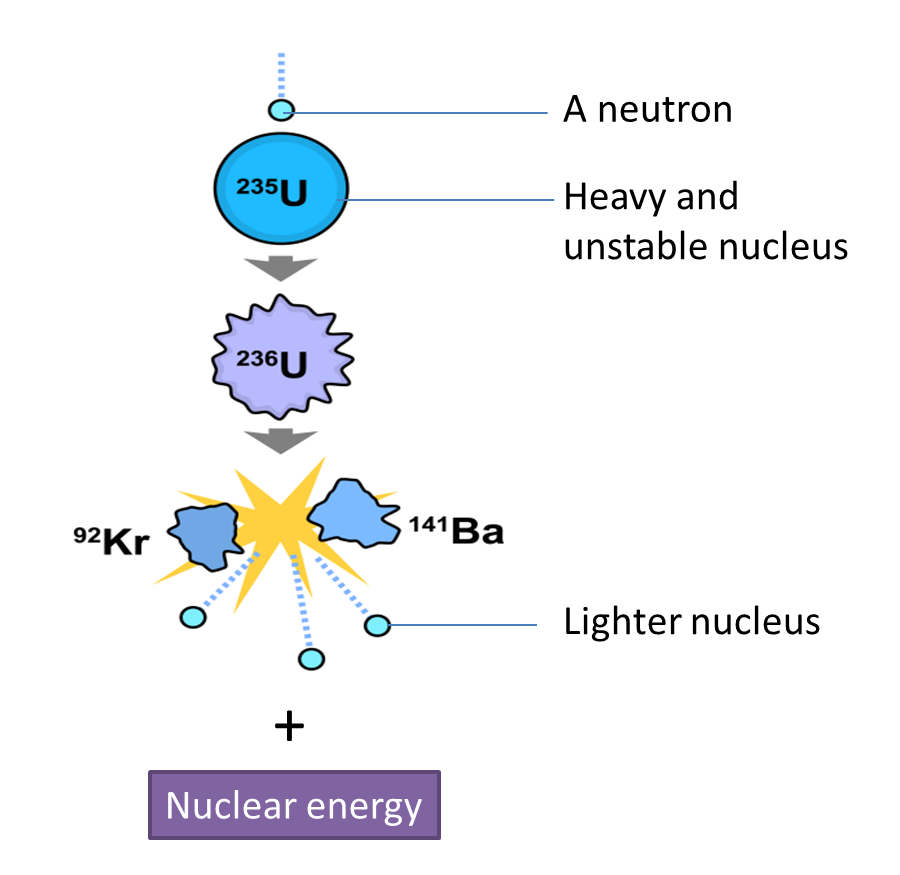(C) Radioisotopes
Radioisotopes are isotopes of a radioactive substance.
Examples of Radioisotopes
Carbon-14 (Carbon dating)
Cobalt-60 (Radiotherapy)
Uranium-235 (Nuclear fuel)
Uranium-238
Plutonium-238
Plutomium-239 (Nuclear fuel)
Uses of Radioisotopes
1. There are two types of isotopes, namely
a. the stable isotopes (non-radioactive)
b. the non-stable isotopes (radioactive).
2. Unstable isotopes go through radioactive decay and emit radiation and they are known as radioisotopes.
3. Radioisotopes have many applications in industry.
Uses of Radioisotope in Medical
Radiotherapy
Gamma rays of cobalt-60 can be used to destroy cancer cells in patients. This treatment is known as radiotherapy.
Tracer to Detect Blood Clots or Tumour
1. A small amount of sodium-24 is injected into the patient's body.
2. Radioactive imaging is then used to detect accumulation of sodium-24 and therefore detect tumours and blood clots before they become dangerous.
Sterilising Medical Instrument
1. Gamma ray emitted from radioactive cobalt-60 can kill germs such as bacteria and fungus.
2. Medical instruments such as surgical equipment, syringes and bandages can be sterilised by using gamma rays.
Uses of Radioisotope in Agriculture
Pest Control
Male insect is sterilised by exposing to radioactive radiation and then released back to the ecosystem. This can ensure that their reproducing effort do not generate new generation and hence reduces the population of the insect.
Tracer
1. The metabolism of phosphorus by plants can be studied using phosphate fertilisers that contain phosphorus-32.
2. A small amount of phosphorus-32 is used in fertilisers.
3. The radiation produced by phosphorus-32 decay is detected by a Geiger-Muller counter. This method can trace the passage of phosphate ions in plants.
4. Carbon-14 is used to study the passage of carbon during photosynthesis in plants.
Develop New Species of Plant
1. Radioactive radiation is targeted to the seeds of plants and hence causes mutation to the genes.
2. By chance, this may develop some superior agricultural products.
Archeology
Radioisotope carbon-14 is used to study and estimate the age of ancient artifacts. This method is named as the radiocarbon dating.
Preserve Food
1. The gamma rays from cobalt-60 are used to kill bacteria in food to make fresh vegetables and fruits last longer without any change in quality, flavour and texture of food.
2. Gamma rays are used to inhibit budding in potatoes and germinating in onions.
Monitoring Thickness of Steel/paper Sheet
1. In a factory, the thickness of paper can be controlled by measuring the quantity of radiation penetrating the paper with the Geiger-Muller counter.
2. Apart from paper, the thickness of plastic, aluminium or iron can also be controlled by using beta rays.
Detecting Underground Leakage
1. A small quantity of radioactive substance is put into water, gas or oil in an underground pipe.
2. The movement of the radioactive substance can be traced by using the Geiger-Muller counter.
Monitoring Content of Food
1. Radiation is used for checking whether a food container has the right amount of food stuff.
Measuring the Wearing Rate of Engine













